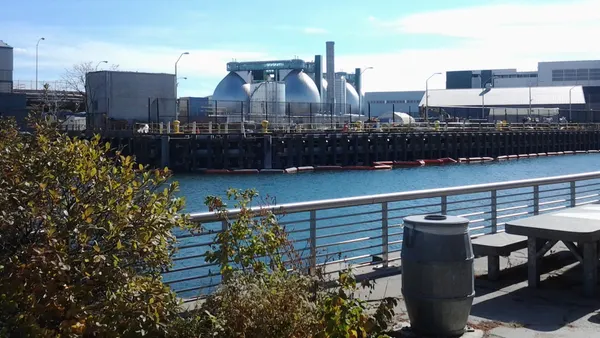Dive Brief:
- The Center for EcoTechnology (CET), in partnership with BioCycle, recently released a toolkit providing guidelines and recommendations for how to add food scraps to yard trimmings composting sites. The publication aims to help municipalities determine whether their yard trimmings compost facilities are ready, or could be ready, to handle food waste as an additional stream.
- The toolkit provides practical steps for taking this approach, including a physical site assessment for operators and a decision-making tree for current yard trimmings management. The document contains a number of best practices for composting food waste, considerations for collection and hauling, and details on state regulatory requirements.
- One key takeaway is that yard trimming composting facilities need to remember that “food waste is an organic waste stream that does not degrade gracefully.” CET and BioCycle suggest introducing food waste slowly, before gradually increasing the quantity and types of food waste accepted at the facility.
Dive Insight:
Given that many state and local governments are trying to divert food waste from disposal to composting, the practical guidelines provided in this latest toolkit are timely. There is increasing demand for food waste processing infrastructure as a result of changing regulations, as well as market demand, and yard trimming facilities can often play a role.
Traditionally, municipalities have collected yard trimmings curbside during warmer months and sent that material to area composting sites. According to the U.S. EPA, yard trimmings comprise 13% of municipal solid waste nationally and the amount composted reached a record high of 27 million tons in 2017. Food scraps accounted for a higher portion of the waste stream, but are still being diverted in smaller quantities.
However, demand is increasing as more municipalities start to collect source-separated food scraps as an additional stream at residential and commercial locations. While siting new processing facilities may be time-consuming and costly, yard trimming composting is already common. According to BioCycle, over 4,700 composting facilities exist in the United States and 57% of these facilities solely manage yard trimmings.
Yet converting some of those operations to accept food may also lead to community pushback. The toolkit emphasizes the importance of neighbor management and the authors recommend facilities avoid trying to “fly under the radar.” Instead, they recommend preemptively and actively engaging neighbors as early as possible. To increase the success of a transition, the toolkit also recommends: acting immediately when loads arrive, having plenty of carbon-rich material on hand to mix in, and being vigilant about odors, leachate, and potential contaminants.
Another factor to consider (according to CET and BioCycle) is that accepting food scraps may also increase demands on two categories often among the highest costs for composting facilities: labor and fuel. The authors recommend ensuring tip fees are appropriately priced as a result. Pricing for finished compost may also need to rise, unless some operational costs can be offset by grant funding or subsidies.
Infrastructure is not the only barrier to advancing food waste composting. As consumer-facing collection programs emerge, many service providers frequently struggle with contamination from unwanted materials such as plastic packaging, plastic utensils, or metal. Pre-processing this material before composting can increase operational costs, but high levels of contamination can also be costly by reducing quality of the finished product. Minimizing contamination of the segregated food waste stream typically requires ongoing education, outreach, and cultural change.









